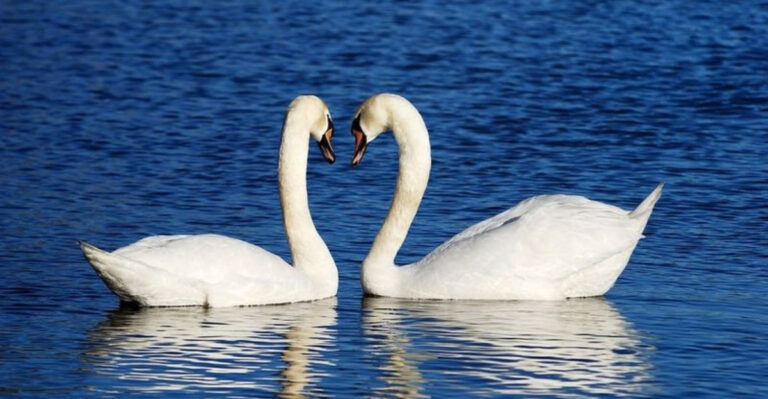9 Signs Snakes May Be Nearby (And 5 Ways To Keep Them Out Of Your Yard)
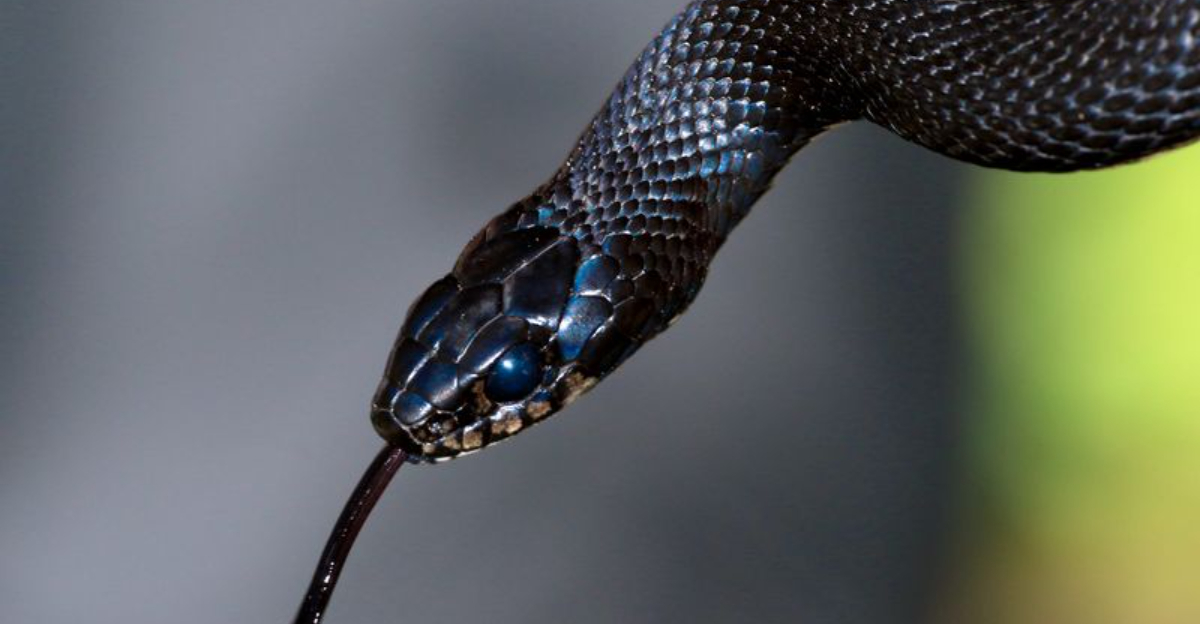
Ever had that creepy feeling something’s slithering nearby? Snakes can be beneficial for controlling pests, but most of us prefer they keep their distance from our homes and families.
Learning to spot the signs of snake activity and knowing how to make your yard less inviting can help you avoid unwanted encounters with these reptiles.
1. Mysterious Rustling Sounds In Grass Or Leaves
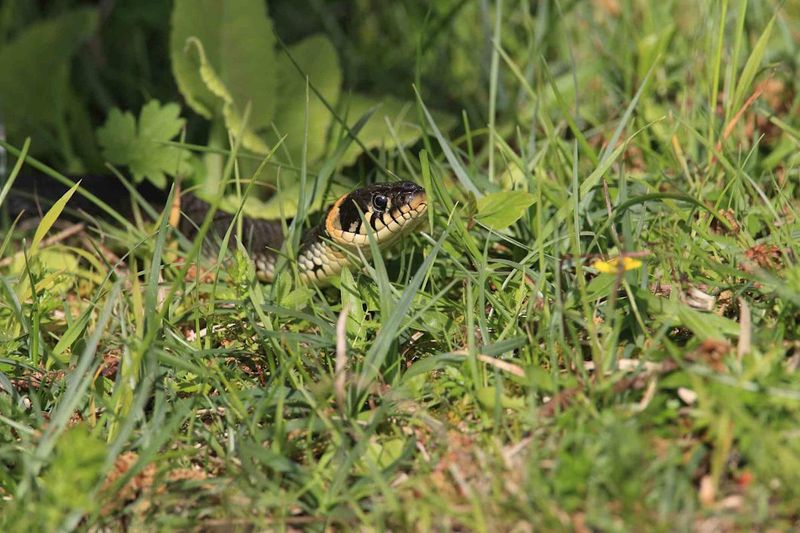
That unusual rustling noise might not be the wind. Snakes create distinctive sounds as they move through vegetation, different from what squirrels or birds make.
Listen for smooth, continuous movements rather than the stop-and-start pattern of small mammals. Morning and evening hours, when snakes are most active, are prime times to hear these telltale sounds.
2. Shed Snake Skins Found In The Area

Finding papery, translucent skin is a dead giveaway that a snake has made itself at home nearby. These shed skins often appear near rocks, woodpiles, or building foundations.
The skin’s pattern and size can help identify the species. Even harmless snakes leave these behind several times yearly as they grow, so one skin might mean several snakes are around.
3. Unusual Pet Behavior

Your furry friends often notice snakes before you do. Dogs may bark persistently at specific areas of the yard or refuse to enter certain spaces they normally enjoy.
Cats might stalk something invisible to you or demonstrate unusual alertness. Watch for pets sniffing intensely at the ground, walls, or foundation areas with focused attention – they’re likely detecting a snake’s scent.
4. Strange Tracks In Dirt Or Dust

Snake tracks look like ribbons pressed into soft surfaces – distinctive S-shaped patterns without footprints. Check areas with loose soil, sandy patches, or dusty garage floors.
The width of the track indicates the snake’s size. Fresh tracks might appear after rain or in morning dew when soil is softest. Some species leave parallel lines rather than S-patterns, especially when moving quickly.
5. Bird Alarms Going Off

Birds act as nature’s warning system. When they spot a snake, many species emit specific alarm calls and engage in defensive behaviors like dive-bombing or gathering in groups.
Mockingbirds, blue jays, and robins are particularly vocal about snake threats. If your backyard birds suddenly create a commotion focused on one area, especially low to the ground, it might be worth investigating – from a safe distance.
6. Disappearing Small Animals

Noticed fewer chipmunks, mice, or frogs lately? A predator might be responsible. Snakes don’t leave behind bones or fur like mammalian predators do when they hunt.
They swallow prey whole, making their presence less obvious. A sudden decline in small wildlife populations, especially without other evidence of predators like hawks or neighborhood cats, could indicate a snake has established hunting territory nearby.
7. Small Holes Appearing Near Structures
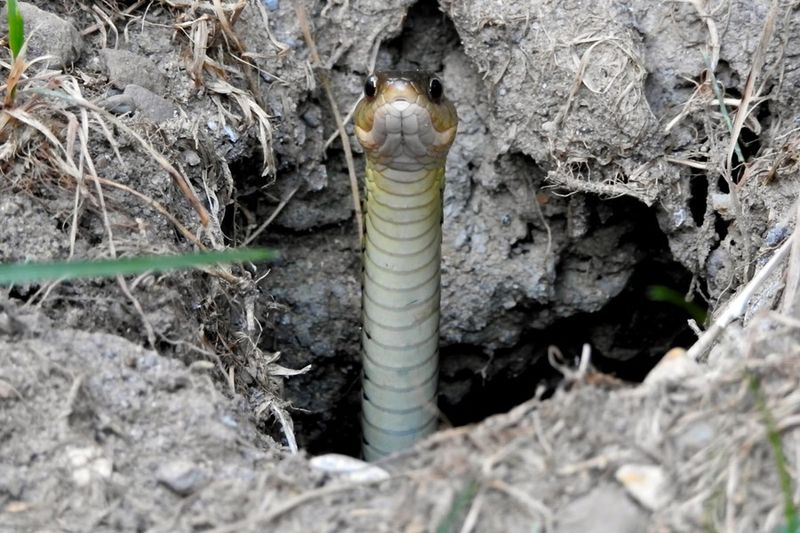
Fresh holes roughly 1-4 inches in diameter might be snake entry points, especially if they appear near foundations, steps, or under sheds.
Unlike rodent burrows, snake holes typically lack dirt mounds outside the entrance. These access points often connect to existing tunnels made by other creatures. Snakes don’t dig their own holes but readily use abandoned rodent burrows or natural crevices to create homes.
8. Droppings That Look Different From Other Wildlife
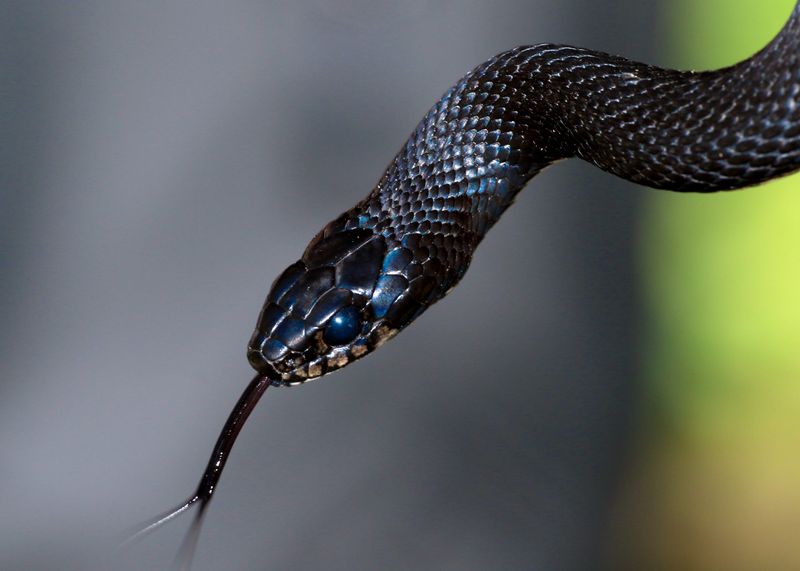
Snake droppings (called musk or feces) have a distinctive appearance – typically dark with white chalky sections.
The white part is uric acid, similar to bird droppings but more tubular in shape. Fresh snake droppings often appear wet and may have a musky odor. You might find them near basking spots or entry points to structures. Unlike rodent droppings, they don’t crumble when dried and often contain visible hair or bone fragments.
9. Unusual Gaps In Rock Walls Or Foundations
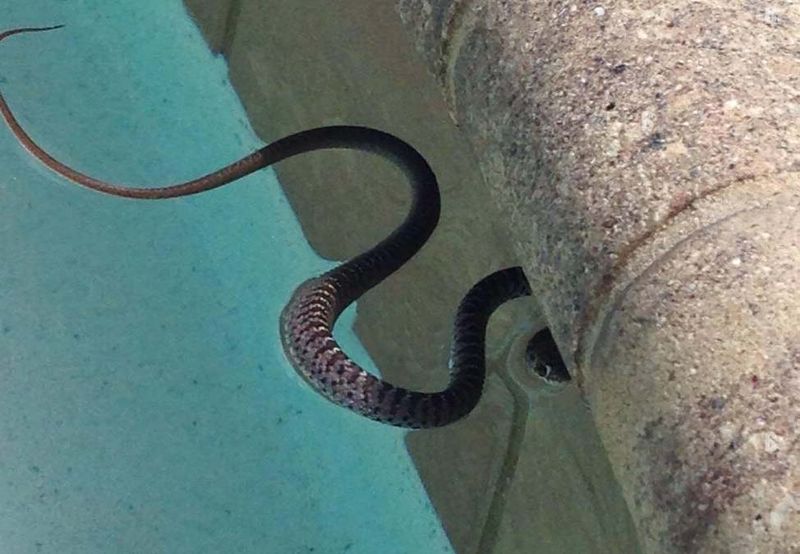
Snakes are masters at finding tiny entrance points. Gaps as small as ¼ inch can provide access for younger snakes, while adults can squeeze through surprisingly narrow crevices.
Pay special attention to spaces between rocks, cracks in foundations, or gaps around pipes and utility entrances. These spots often show subtle wear marks or small amounts of soil displacement if snakes regularly use them as passageways.
10. Keep Grass Short And Vegetation Thinned
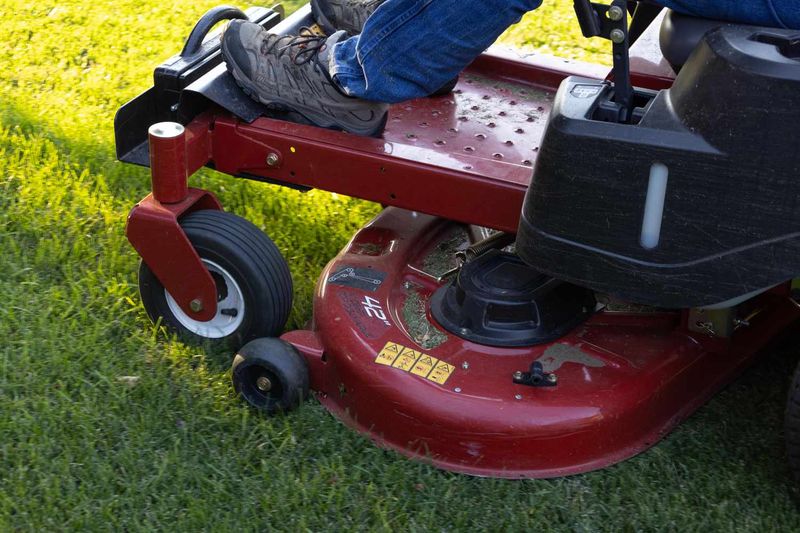
Snakes hate feeling exposed and vulnerable. Regular mowing prevents them from finding cover and makes your yard less attractive as a hunting ground.
Maintain grass at 2-4 inches and remove dense ground covers like ivy or pachysandra where possible. Trim lower branches of shrubs to create 6-12 inch clearance from the ground. This elimination of protective cover dramatically reduces your property’s appeal to snakes.
11. Remove Food Sources That Attract Snakes
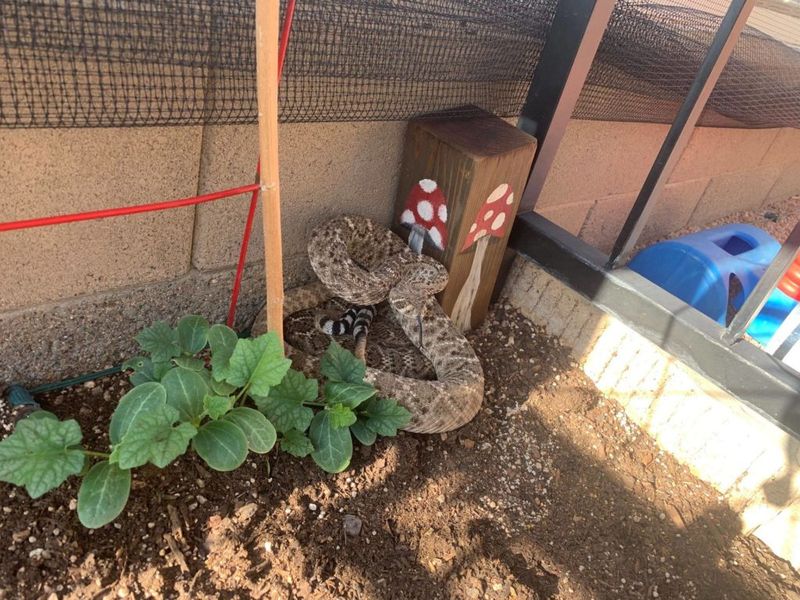
Hungry snakes follow their prey. Bird feeders create seed mess that attracts rodents, which in turn attract snakes seeking an easy meal. Use rodent-proof feeders, clean up spilled seed regularly, and store pet food indoors. Consider reducing outdoor water sources like birdbaths during peak snake season. Compost bins should be secure and located away from your home to avoid creating a snake buffet.
12. Eliminate Hiding Spots And Shelter
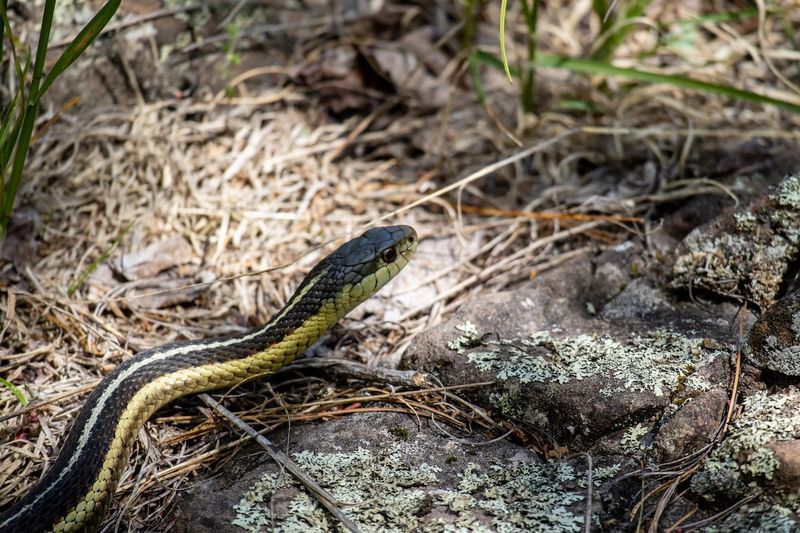
Snakes love cozy retreats like woodpiles, compost heaps, and rock piles. Store firewood at least 2 feet off the ground and away from your house. Remove debris piles promptly after yard work.
For permanent landscape features, consider using snake-deterring materials like sharp gravel or lava rock around the perimeter. Metal mesh barriers buried a few inches deep around sheds prevent snakes from establishing dens underneath.
13. Install Snake-Proof Fencing
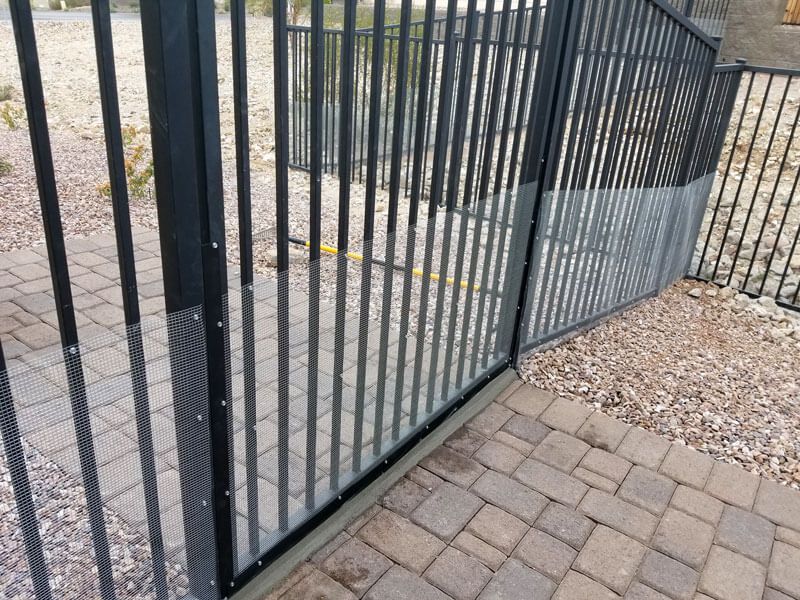
Specialized barriers can keep slithering visitors out. Effective snake fencing needs to be solid or have very small mesh (¼ inch or less), buried 6 inches underground, and angled outward at 30 degrees.
The fence should stand at least 30 inches tall without trees or structures nearby that could serve as bridges. Hardware cloth works well for smaller areas, while commercial snake fencing provides larger-scale protection for property perimeters.
14. Use Natural Snake Repellents

Certain scents and substances make snakes uncomfortable. Sulfur, cinnamon oil, and clove oil have shown some effectiveness when applied around yard perimeters. Commercial snake repellents containing naphthalene or sulfur compounds create barriers snakes prefer to avoid.
For a natural approach, plant snake-repelling vegetation like marigolds, lemongrass, or wormwood around your property edges. Reapply repellents regularly, especially after rain.




